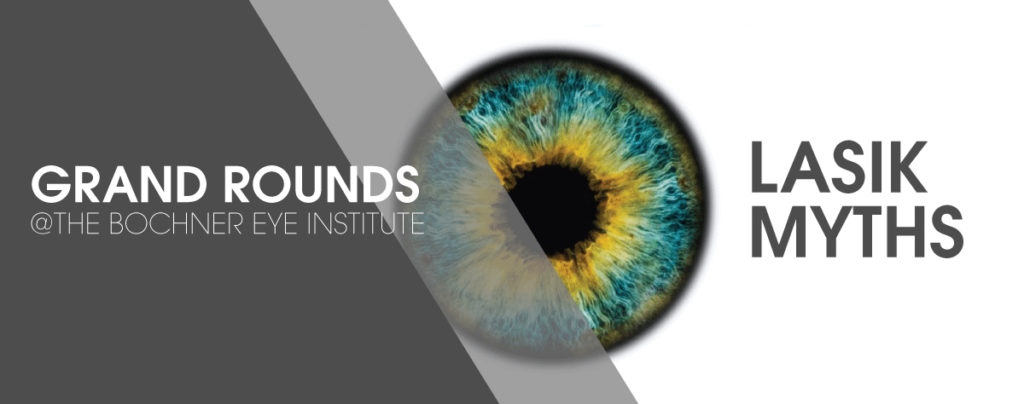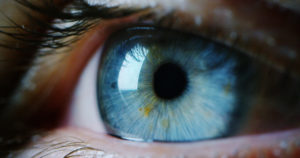Femtosecond Laser Online
June 30th, 2020PanOptix Trifocal Lens Exchange Toronto
May 27th, 2020Refractive Lens Exchange replaces the crystalline lens of the eye with an intraocular lens. This procedure is recommended over laser eye surgery when patients desire improvements in distance and reading vision, have early cataracts or have a high degree of nearsightedness or farsightedness.
Grand Rounds – LASIK Myths
February 11th, 2020
Case
A 28 year-old male was referred because of sterile infiltrates and peripheral pannus formation of 1-2 mm of both corneas. He was a long-term soft contact lens wearer, frequently slept in his lenses, and did not use a disinfectant. We instructed him to discontinue his contact lenses and prescribed a course of a topical steroid. The corneal infiltrates gradually resolved.
Reasons Why LASIK Is a Better Vision Correction Solution than Contacts
December 24th, 2019 If you need vision correction, the thought of laser eye surgery may be intimidating. You might worry about the procedure’s cost or the risks involved, and these factors may lead you to believe that contacts are the better solution.
If you need vision correction, the thought of laser eye surgery may be intimidating. You might worry about the procedure’s cost or the risks involved, and these factors may lead you to believe that contacts are the better solution.
However, there are notable downsides to wearing contact lenses, and LASIK offers several advantages, including the convenience and freedom of no longer needing to rely on a vision correction device.
Below, Dr. Raymond Stein of Bochner Eye Institute talks more about why LASIK is a better solution than contacts. Read the rest of this entry »
What Matters Most When Choosing a LASIK Surgeon?
May 21st, 2019 After making the decision to have laser vision correction, the most important choice you will make is the surgeon you select to perform your procedure. The search for the right surgeon can be overwhelming if you don’t know what you’re looking for. To help guide you in the right direction, leading LASIK surgeon Raymond Stein of Bochner Eye Institute shares his thoughts on choosing a LASIK provider. Read the rest of this entry »
After making the decision to have laser vision correction, the most important choice you will make is the surgeon you select to perform your procedure. The search for the right surgeon can be overwhelming if you don’t know what you’re looking for. To help guide you in the right direction, leading LASIK surgeon Raymond Stein of Bochner Eye Institute shares his thoughts on choosing a LASIK provider. Read the rest of this entry »
Cloudy Vision after Cataracts
April 23rd, 2019 A common question that Dr. Raymond Stein of Bochner Eye Institute receives from cataract surgery patients is whether cataracts can “grow back” after surgery. Cataracts cannot, in fact, grow back after surgery. Once they are removed, they are gone for good.
A common question that Dr. Raymond Stein of Bochner Eye Institute receives from cataract surgery patients is whether cataracts can “grow back” after surgery. Cataracts cannot, in fact, grow back after surgery. Once they are removed, they are gone for good.
However, in rare cases, patients who have their vision restored with cataract surgery may notice a regression in their eyesight that is similar to what they experienced with cataracts. This decline is due to a condition known as secondary cataracts; and luckily, it is easily treated. Read the rest of this entry »
5 Reasons to Have LASIK in 2019
January 13th, 2019 Do you struggle with the challenges of a refractive error and the restrictions of glasses or contact lenses, yet find yourself on the fence about having LASIK?
Do you struggle with the challenges of a refractive error and the restrictions of glasses or contact lenses, yet find yourself on the fence about having LASIK?
Bochner Eye Institute understands that the idea of having laser eye surgery to improve vision makes some people uncomfortable. However, we want you to know the truth about LASIK: the short, virtually painless procedure can give you the freedom and joy of clear, crisp vision and a glasses- and contacts-free lifestyle!
If you need more motivation to consider your options, read on as we share five reasons to consider having LASIK in 2019. Read the rest of this entry »
Dr. Raymond Stein Is Keynote Speaker at Ophthalmology Meeting at Columbia University in NYC
January 12th, 2019Dr. Raymond Stein was pleased to be a keynote speaker at the 2018 Precision Ophthalmology “Optimizing the Refractive Status of the Eye” meeting at Columbia University in New York City. Held November 30, the meeting gathered ophthalmologists, optometrists and eye care professionals from around North America to discuss the current state of cataract surgery, refractive surgery, dry eye and corneal disease treatments and share information about advances in the field.
In his first talk, Dr. Stein reflected on some of the lessons he has learned in 10 years of performing topography-guided PRK and corneal crosslinking for the treatment of keratoconus. Dr. Stein and his colleagues at Bochner Eye Institute are some of the first doctors in Canada to use this approach to treat the progressive thinning and bulging of the cornea. To date Dr. Stein has performed over 5,000 of these procedures with excellent results. 
Later, Dr. Stein spoke about using a corneal laser to treat age-related macular degeneration (AMD), or the deterioration of the portion of the retina responsible for central vision. Bochner Eye Institute is the first practice in North America to use a laser to modify the cornea and improve distance and near vision in patients with AMD. A study conducted by the Bochner team showed that patients who had the laser procedure experienced improvements in both distance and near vision three years after treatment.
Dr. Stein was invited to speak at the Precision Ophthalmology meeting by Dr. Stephen Trokel, a renowned ophthalmologist and a pioneer in refractive surgery. Dr. Trokel developed the excimer laser for vision correction and performed the first human excimer laser surgery in 1987. He also trained Dr. Stein in refractive surgery in 1991.
Earlier in 2018, Dr. Stein spoke at the World Ophthalmology Congress of the International Council of Ophthalmology in Barcelona as well as the Canadian Ophthalmological Society’s annual meeting, which took place in Toronto.
Contact Dr. Stein at Bochner Eye Institute
Dr. Raymond Stein is a board-certified ophthalmologist and the medical director at Bochner Eye Institute. For more information about the work Dr. Stein and the Bochner team are doing with macular degeneration, keratoconus and refractive surgery, please feel free to call 416-960-2020 or email us today.
Is Keratoconus Curable?
October 31st, 2018
Keratoconus is a degenerative disease that affects the cornea, or the transparent covering of the eye. Instead of maintaining a round shape, corneas affected by keratoconus thin and bulge, developing a distorted conical shape. This distortion prevents light entering the eye from focusing properly on the retina, resulting in significant visual impairment. What’s more: keratoconus can make it difficult to comfortably wear certain types of rigid contact lenses to correct vision.
Patients diagnosed with keratoconus have asked our team at Bochner Eye Institute whether the disease is curable. While a definitive cure for keratoconus has not yet been determined, our eye doctors are at the forefront of treatments to manage the disease and stave off vision loss. We are widely known throughout North America for our expertise; in fact, we established the first keratoconus clinic in Canada in 2008. Read on as we explain how we can prevent vision loss to keratoconus. Read the rest of this entry »
Corneal PhotoVitrification (CPV)
October 22nd, 2018

Dr. Samuel Markowitz, a specialist in Low Vision Rehabilitation and our associate and collaborator offered the following with regards to our common experience with Clear K CPV:
Corneal PhotoVitrification (CPV) is the latest of promising therapies approved recently in Canada suitable for application in cases with dry AMD. CPV is in essence a corneal photorefractive procedure which results in structural changes in the superficial cornea which in turn redirect light passing thru the cornea towards the peripheral retina. In essence the net result of the procedure is similar to the effect of prisms on incoming light into the retina. The wavefront aberrations profile of the cornea following CPV is best described as dominated by a quadrafoil pattern which can be recorded with corneal topography. Each of the 4 quadrants of the pattern produces a prismatic effect on incoming light towards the periphery of the retina.
This technology embraces the modern understanding of residual visual abilities in those who lost central vision due to disease and the ensuing rehabilitation process. Modern low vision rehabilitation in the event of macular vision loss is based on identification of Preferred Retinal Loci present on the retina and attempts to redirect the incoming light into the eye towards the existing PRL. There is a long time honored experience in this aspect. It was and is still based on eye movement training and also on use of prisms to redirect light to PRLs. Results from this methodology of treatments are published in the literature and proved to be beneficial in improving vision in those who lost macular vision. CPV is another development in the same methodology which included training of eye movements and use of prisms. It also shows already same benefits as proven in the past with eye training methods and prisms.
In Toronto, we have experience up to date with about 20 cases (about 35 eyes) which were treated with CPV. About 18 patients saw an improvement in visual functions and noted improvements in various activities of daily living and expressed various degrees of satisfaction following the treatment. 2 cases saw no vision related improvements after treatment. There were no downward side effects following the treatment.
Given that there are no other treatments today for dry AMD, our preliminary conclusion is that CPV offers a significant benefit to those treated translated easily in significant improvements in quality of life. Also with the advent of newer technologies it has to be emphasized that CPV is not applied to and not structurally affecting the retinal tissue.